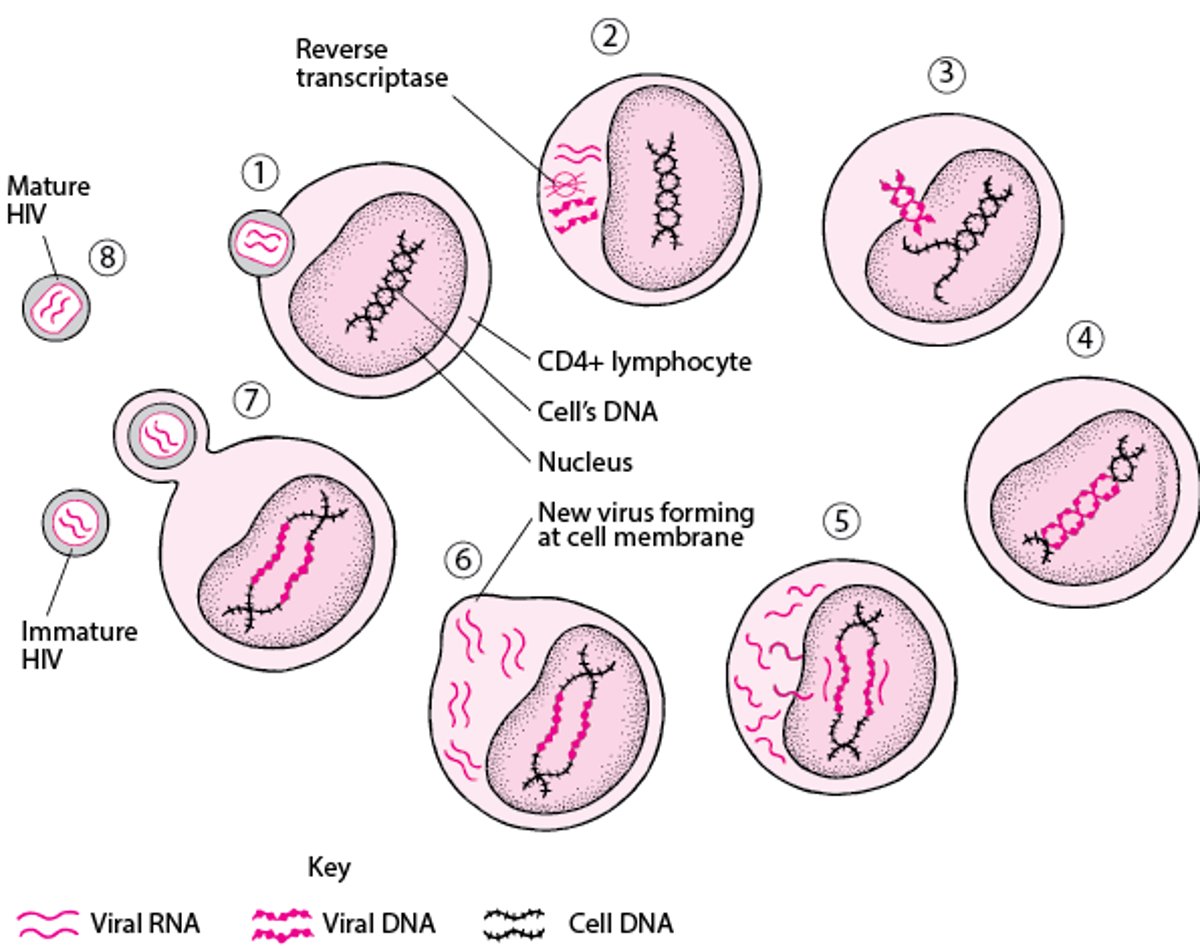Simplified Life Cycle of the Human Immunodeficiency Virus
Like all viruses, human immunodeficiency virus (HIV) reproduces (replicates) using the genetic machinery of the cell it infects, usually a CD4+ lymphocyte.
HIV first attaches to and penetrates its target cell.
HIV releases RNA, the genetic code of the virus, into the cell. For the virus to replicate, its RNA must be converted to DNA. The RNA is converted by an enzyme called reverse transcriptase (produced by HIV). HIV mutates easily at this point because reverse transcriptase is prone to errors during the conversion of viral RNA to DNA.
The viral DNA enters the cell’s nucleus.
With the help of an enzyme called integrase (also produced by HIV), the viral DNA becomes integrated with the cell’s DNA.
The DNA of the infected cell now produces viral RNA as well as proteins that are needed to assemble a new HIV.
A new virus is assembled from RNA and short pieces of protein.
The virus pushes (buds) through the membrane of the cell, wrapping itself in a fragment of the cell membrane and pinching off from the infected cell.
To be able to infect other cells, the budded virus must mature. It becomes mature when another HIV enzyme (HIV protease) cuts structural proteins in the virus, causing them to rearrange.
Medications used to treat HIV infection were developed based on the life cycle of HIV. These medications inhibit the 3 enzymes (reverse transcriptase, integrase, and protease) that the virus uses to replicate or to attach to and enter cells.
